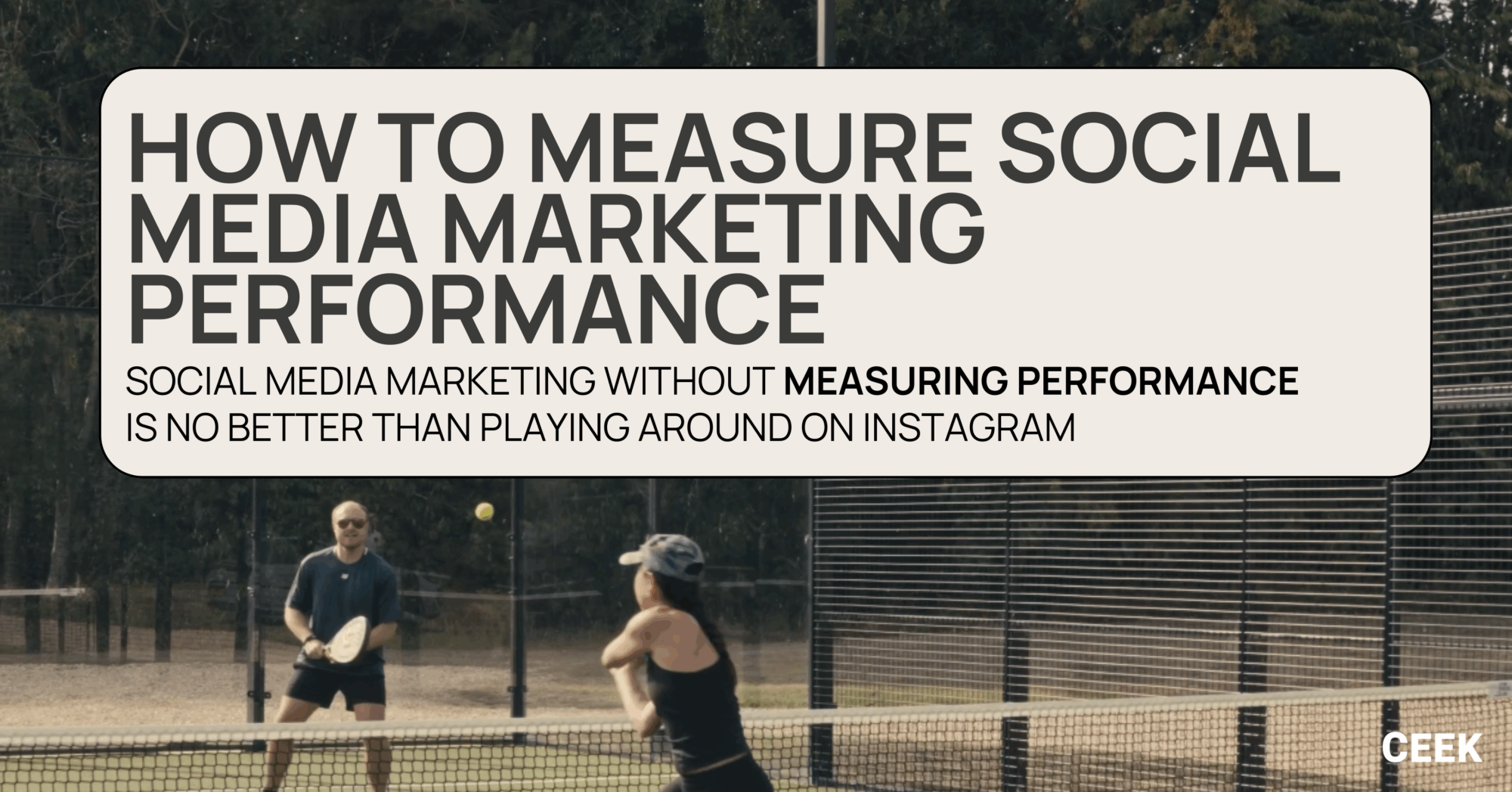Far too many companies dive into social media marketing just because it’s the hot thing to do. Without clearly defined objectives and performance metrics, you’re doing little more than wasting time and budget.
Our guide will help you understand how to measure social media marketing performance and what metrics we use at CEEK to ensure transparency and clearly outline what results our campaigns are driving.
Setting Your Goals
Before you can start to worry about the various metrics you will explore, you first need to think about the goals specific to your business.
Why do you want to do social media marketing?
Are you looking to increase sales, grow your audience, engage your followers? These are all valid objectives, but will require different strategies to achieve them.
The point we want to emphasise is that if you want to measure performance, you need to know what you want to achieve.
Key Performance Indicators (KPIs)
Here are some of the metrics and KPIs you can use to help measure your social media marketing performance.
Reach
Reach is a very top-level measure that shows you how many people have seen your post. It helps you understand what your potential audience looks like, particularly when measured across a series of posts.
This can be segmented to see the difference in followers vs non-followers to help you understand just how well your content is being resurfaced by algorithms.
Impressions
Impressions is the sister metric to reach and measures how many times your post has been seen. Again, it’s a very top level metric that helps you understand if your post is getting the eyeballs you expect.
When combined with reach, you can start to get a better idea of how often a person is seeing your post.
Engagement Rate
This metric tells you the number of interactions your posts have had. This could be comments, likes or shares, depending on what platform you’re working with.
The engagement rate isn’t a metric that social platforms share with you – it’s one you need to calculate by adding up your total likes, comments, shares and saves, dividing the total by your number of followers. Then multiply by 100 to get a percentage.
Amplification Rate
Amplification rate is a type of engagement metric that specifically looks at how your audience is sharing your content. It’s seen as a key metric for many companies because it can work as free marketing when your audience shares a post heavily.
Similar to engagement rate, you need to measure it by taking your total number of shares and dividing it by your total number of followers before multiplying by 100 to have a percentage figure.
Virality Rate
Very similar to the amplification rate; the only difference is the virality rate measures against the number of impressions your post got.
So, rather than focusing on just your audience, you are seeing how much your post gets shared across everyone who’s seen it.
As per the name, it’s a great way to track how ‘viral’ a post goes.
Video Renention Rate
When you’re working with video, you don’t just care about the number of views you get, you want to know how much of the video is being seen. Are people watching to the end or seeing a couple of seconds and clicking off?
It’s really important to see how well your content is gripping the viewer and ultimately, how much of your content they are seeing.
Audience Growth Rate
Measuring your audience growth rate allows you to see how many new subscribers or followers you are picking up within a certain period of time. This is a great metric to track to give yourself a birds eye view of how well a campaign has gone.
Audience Demographics
It’s important that your audience demographic always aligns with your expectations as a business. If you’re selling female hygiene products like one of our clients, DAME, then you don’t want a heavily male demographic audience.

You want to keep a close eye on your audience demographic over time as it can give you an insight into whether your marketing efforts are taking you away from your ideal customer base.
Click Through Rate (CTR)
Now we get into the serious bottom line metrics. Click through rate is fairly self explanatory and measures how often someone clicks on a link in your post. Clicking through is an important step in taking your audience down your marketing funnel.
CTR is an important testing metric that can help you work out what the optimal call-to-action for a post is.
Conversion Rate
Conversion rate measures how well your content is getting people to take action. Action could mean a sale, email sign-up, download and more.
For many businesses, this is the most important metric in measuring social media marketing performance because it tangibly connects a campaign to the actions you want your customers to take.
Cost Per Click (CPC)
We are now venturing into paid social media marketing with CPC. This metric will tell you how much ad spend it costs you to receive a click. It’s a very valuable measure of how efficiently you’ve set up your ads and you want to try to bring this number down.
The quality of your ad, the audience you’re delivering ads to and even the size of your budget will all have an impact on your Costs Per Click.
Cost Per Thousand Impressions (CPM)
The other main metric for paid social media is CPM or Cost Per Thousand Impressions. It simply measures how much ad spend it costs to show your ad to 1000 people. Unlike CPC with its focus on actions, CPM is concerned with how much you are spending just for your ad to be seen.
It’s very important to measure when trying to gauge the cost effectiveness of a high level brand awareness campaign or simply increasing your reach.
Summary
Social media marketing without measuring performance is no better than playing around on Instagram. To make the most of your efforts, you need to clarify your goals and track the metrics that are most important for your business
If you are looking for a dedicated social media marketing team to elevate your brand’s growth, contact us to align on business goals and develop the initial strategy.





